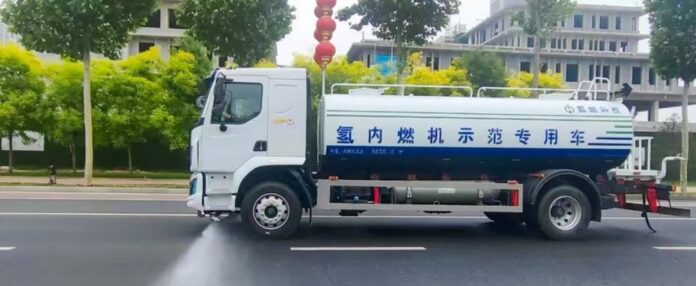A sprinkler truck in Cangzhou, China has become the country’s first hydrogen internal combustion engine vehicle to enter operational service, according to Chinese media. The engine is lubricated by an engine oil codeveloped by the original equipment manufacturer Yuchai and Chinese lubricant company PetroChina.
A hydrogen internal combustion engine (ICE) burns the volatile gas in a modified engine rather than converting it to electricity, as in a hydrogen fuel cell. Because they are essential the same concept as a traditional ICE, hydrogen ICEs offer a glimmer of hope for engine oil blenders who have seen volume sales gradually dwindle as more battery electric take to the roads.
Hydrogens ICEs present technological challenges not only for designers but also for tribologists. They require hardened valves and valve seats, reinforced connecting rods, specialized spark plugs and injectors for gaseous fuel.
Direct injection systems can deliver power outputs comparable to or above those of gasoline engines, but hydrogen’s wide flammability range and rapid ignition speed can increase the risk of preignition and knock. The lubricants must surmount the obstacles and withstand higher operating temperatures, too.
The lubricant underwent more than 500 hours of combined bench and road testing, said the report. It is formulated to operate under hydrogen combustion’s specific conditions, addressing issues such as water emulsification, ash management, low-speed pre-ignition, knock, piston deposit buildup and valve system wear.
Hydrogen engines often operate with lean air-fuel mixtures to reduce nitrogen oxide emissions, which can lower power output unless compensated through turbocharging or larger displacement,b . The technology faces challenges including oil droplet-induced combustion anomalies, managing water generated during combustion that can impair lubricant stability, and developing oils that prevent emulsification and control ash content. These factors remain key hurdles to bringing hydrogen internal combustion technology into wider commercial use.
